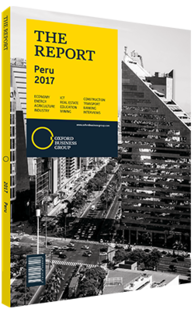Félix Antelo, CEO, LATAM Airlines Peru: Interview

Interview: Félix Antelo
As the Peruvian market becomes more competitive for airlines, what role does innovation play?
FELIX ANTELO: Peru has the most competitive airline market in South America; there are six main players for a market of 11m passengers. This contrasts with other countries in the region. For instance Argentina and Chile have two players, Brazil has four for a market of 60m passengers, and Colombia has three airlines for a market twice the size of Peru’s. In light of increasing competition – especially as new low-cost airlines enter the market – the main players find themselves in a situation where they have to choose between continuing with the same business model which worked until now, or changing through innovation. The sector is about to experience a revolution, similar to that of 2006 in Latin America, where a decrease in costs and prices allowed air traffic in Peru and other countries in the region to triple between 2006 and 2016. The sector is now entering a new stage that demands innovation in costs, and most importantly, in ways to increase the number of passengers. Customers are changing, driven in part by the millennial generation, therefore investing in digitalisation is key to be able to cater to them. The goal is to simplify the experience of travelling: first, by offering customers an app to purchase flights, manage bookings, access customer service easily and receive updates on flights; secondly, by improving the experience of travelling with enhanced in-flight entertainment systems; thirdly, by investing in frictionless technology at airports to decrease check-in and boarding times; and lastly, by investing in internal innovation to simplify operations.
What are the main challenges for the network of domestic routes, particularly regarding Lima?
ANTELO: There is room for improvement in domestic flight routes, especially those that connect Cusco with Iquitos, Arequipa, Juliaca and potentially Trujillo. The main challenge regarding the enhancement of existing routes between secondary cities and the opening of new ones is Peru’s developing economy. The fact that Peru is still a developing economy may limit the possibility of opening more internal routes, although some carriers, such as LATAM, have chosen to open new routes like the line that will connect Cusco with Trujillo. One could argue that opening new domestic routes would in turn enhance demand for these pathways, however, others are more conservative and believe that the demand should be there first. Perhaps the key to a better domestic network does lie in the first option rather than the latter, but driving demand instead of responding to it does involve higher risk. Additionally, there are other challenges faced by airlines, for example many airports – such as Piura – lack fuelling facilities, and many lack sufficient lighting as well. Opening more domestic routes would not only be beneficial in increasing traffic numbers between secondary cities, it would also better distribute traffic throughout the country’s airports, since the Lima airport has reached its maximum capacity due to deficient infrastructure.
How can Lima act as an international transportation hub in the South American Pacific Coast?
ANTELO: Lima has all the right geographical conditions to become the main transportation hub in the South American Pacific Coast, and even in South America, especially for passengers travelling from Argentina, Chile or Uruguay to other parts of Latin America, the However achieving this, as opposed to favouring Bogotá, will prove to be difficult if the necessary developments do not take place; this includes building a second runway for the Jorge Chávez International Airport to allow more flights during early or late hours of the day, and changing the luggage system to minimise the number of lost bags. The country’s growth potential, enticing tourism sector, ideal geographical location, and ongoing infrastructure improvements are solid foundations for Peru to become an ideal travel hub.
You have reached the limit of premium articles you can view for free.
Choose from the options below to purchase print or digital editions of our Reports. You can also purchase a website subscription giving you unlimited access to all of our Reports online for 12 months.
If you have already purchased this Report or have a website subscription, please login to continue.

